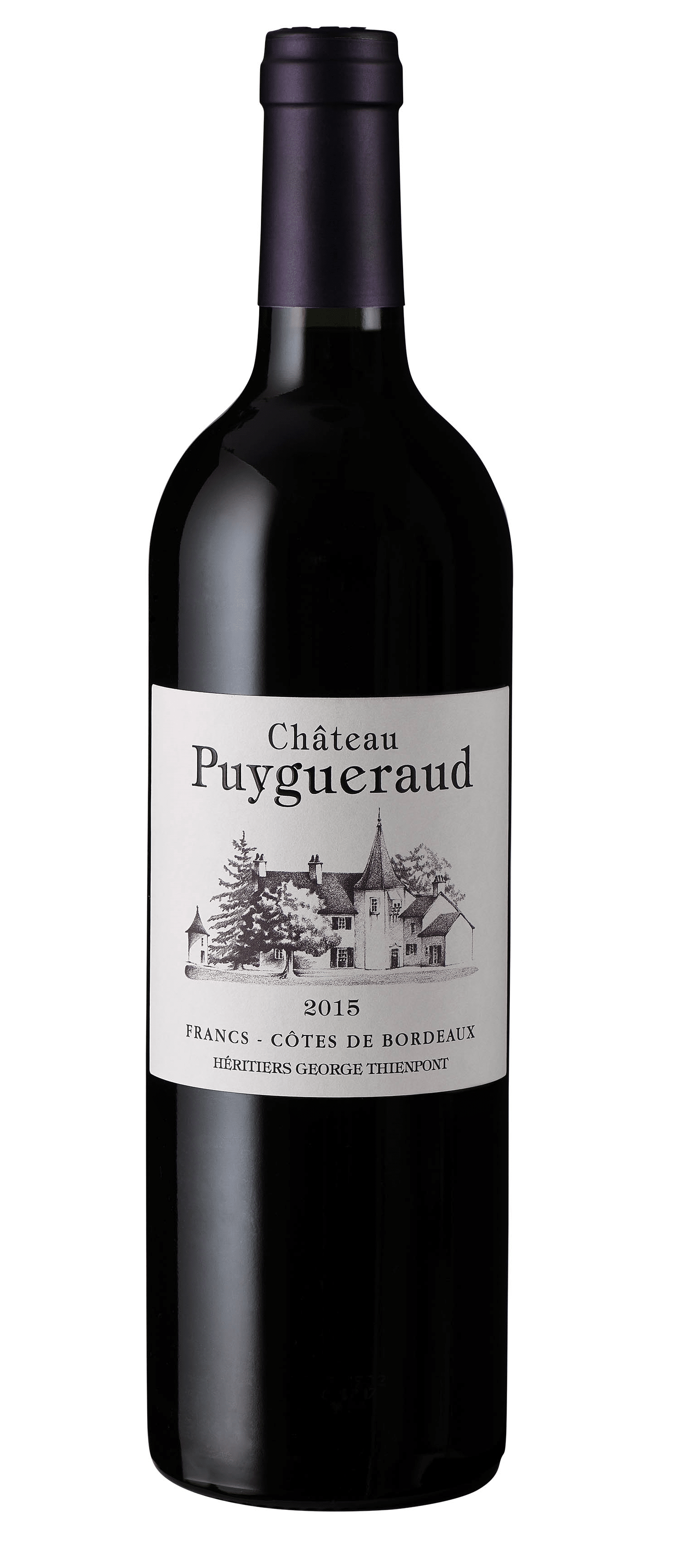Château Puygueraud
WHY BUY IT ?
- Property of the Thienpont family since 1946, worked with passion by Nicolas Thienpont (Ch. Pavie Macquin, Ch. Larcis Ducasse) and his son Cyrille
- A very respectful approach to the environment – polyculture on the whole estate: vines, kiwis, cattle, cereals
- A flagship property of the Côtes de Francs and a must on the right bank
- Terroir located on the rocky plateau overlooking the magnificent Dordogne valley, which continues to Saint-Emilion
- Excellent value for money!
- Renewed plantings and massal selections of Cabernet-Franc for a greater precision in the wine, without forgetting the touch of Malbec dear to George Thienpont, Cyrille’s
The history of Château Puygueraud has been linked to the Thienpont family since 1946, when George Thienpont acquired this property whose elegant mass dominates the entire appellation. Yet when he arrived, the vineyard was ruined. George Thienpont has patiently raised it , with his thirteen children, restructuring the soil through mixed farming and breeding. It was not until the late 1970s that he began replanting the vineyard. The 1983 vintage was the first wine of the Château. Here, polyculture prints everywhere a breath very alive: meadows and cereal crops alternate with the vine.
The vines are 75% Merlot, 20% Cabernet Franc and 5% Malbec. Château Puygueraud is produced mainly from the Merlot grape, with, however, a share of Cabernet quite marked for the appellation and a touch of Malbec that brings its peppery touch to the blend. From 2005, Cabernet Sauvignon is torn up to prefer the Cabernet Franc, earlier and better adapted to the terroir of Côtes de Francs. Another objective of property is the control of yields. The latter are always below the maximum of the appellation, in order to favor a good maturity at the harvest with a satisfactory sanitary level. Manual harvesting is preceded by the development of a plot harvest plan taking into account an analytical monitoring of the sugar / acid balance, but especially of berry tastings for the evolution of phenolic maturity. The choice of these “farming methods” is deliberate. The quality of the harvest is the key factor in obtaining good wines. After a gentle extraction and a maceration sometimes accompanied by micro-oxygenation under marc, the draining is done in barrels followed by malolactic fermentation. Aging on fine lees is carried out without excessive withdrawal or calendar rhythm.
At the tasting, Château Puyguéraud offers a wine with an originality of aromatic expressions at a time when many wines end up resembling themselves as coming from the same mold.
Their Team
- Owner: Family THIENPONT
- Consulting oenologists: Stéphane DERENONCOURT, Julien LAVENU




